Survivors of Canada's 'cultural genocide' still healing
- Published
'The nun rubbed my face in my own urine'
A report on Canada's history of separating indigenous children from their parents at abusive residential schools has called the practice "cultural genocide". But what does the proposed reconciliation mean for survivors?
In 1966, five-year-old Joseph Maud was separated from his family and sent to live at a Canadian residential school for indigenous students in Pine Creek, Manitoba.
Maud remembers it was like walking into an invisible brick wall - students were expected to speak English or French and Maud only spoke his native Ojibwa. If the students spoke their own language, ears were pulled and mouths were washed out with soap.
"But the greatest hurt was being separated from my parents, cousins and uncles and aunties," says Maud, who now lives about an hour from Pine Creek.
When the lonely little boy would wet the bed, his nun in charge of his dormitory would rub his face in his own urine.
"It was very degrading, humiliating. Because I'm sleeping in a dormitory with 40 other boys," he says. "It's bringing tears to my eyes right now just thinking about it."
The residential school survivor remembers kneeling painfully on the cement chapel floor, because the nuns told him 'that's the only way God hears you.'
"I cried going down on my knees, and my thoughts were 'when is this going to end? Somebody help me,' calling out for my parents." Each day, the distance between them increased, he says.
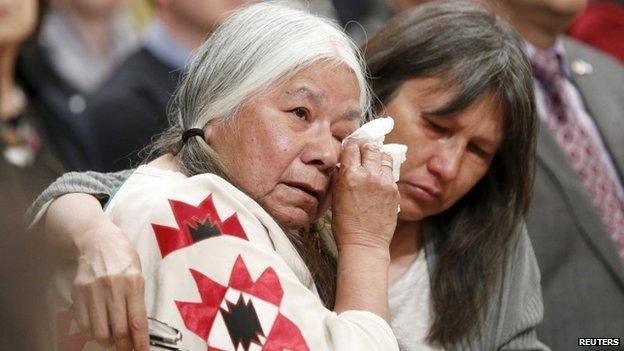
A woman reacts to the release of the long-awaited TRC report
On Tuesday, the government of Canada released a report, external on residential schools, with testimony from nearly 7,000 witnesses, called the Truth and Reconciliation Commission (TRC).
From 1840 to 1996, more than 150,000 First Nations, Metis and Inuit children were taken from their families and placed in these schools, in order to "kill the Indian in the child".
TRC chair Justice Murray Sinclair said more than 6,000 residential school students died.
Many more suffered emotional, physical and sexual abuse. Survivors of St Anne's Indian Residential School in Fort Albany, Ontario, are suing the government to release an unredacted version of documentation that shows staff used an electric chair to shock students as young as six and forced sick students to eat their own vomit.
The TRC report concludes that the government-led policy amounted to cultural genocide.
"These measures were part of a coherent policy to eliminate Aboriginal people as distinct peoples and to assimilate them into the Canadian mainstream against their will," says a summary of the report.
"The Canadian government pursued this policy of cultural genocide because it wished to divest itself of its legal and financial obligations to Aboriginal people and gain control over their land and resources."
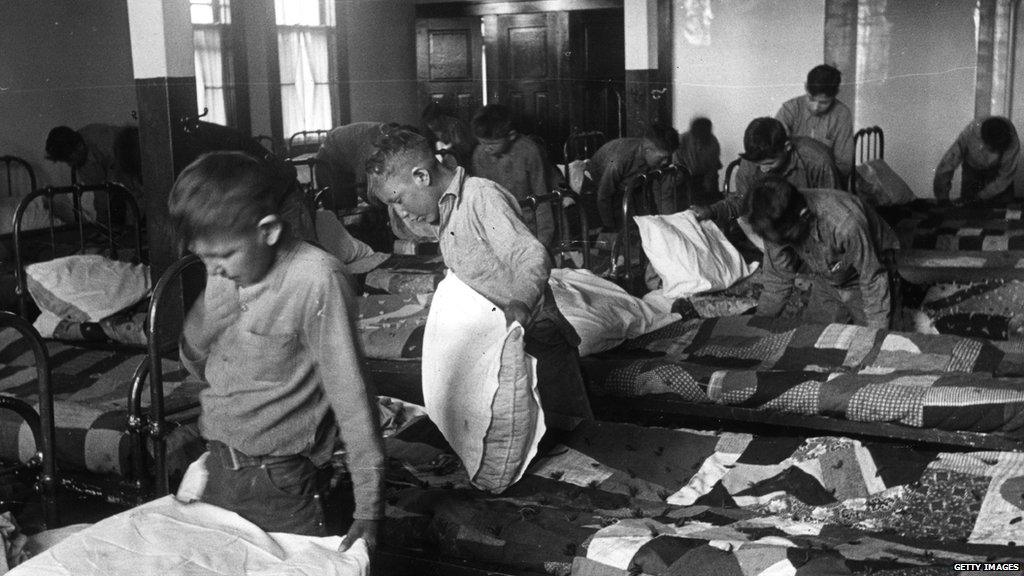
Indigenous children at a residential school in 1950
Prime Minister Stephen Harper apologised to the survivors in 2008, but the report notes "the urgent need for reconciliation runs deep in Canada" and says Canada needs to move from apology to action.
The report makes 94 recommendations about the "way we talk to, and about, each other", including implementing an Aboriginal Languages Act to preserve and promote those languages, and a memorial museum to be launched by Canada's 150th anniversary in 2017.
This week, there were more 15,000 tweets under the hashtag #MyReconciliationIncludes.
"#MyReconciliationIncludes the freedom to identify as Aboriginal without fear of racism by peers/authorities/institutions," @starleigh_grass tweeted, external.
Cindy Blackstock tweeted, external "reconciliation means not saying sorry twice. End inequality in fed. funding for First Nations kids."
Barbara Nolan, who attended St Joseph's Girls Residential School in Spanish, Ontario, in the 1950s, is now working as a counsellor with a degree in psychology.
"We should have been embraced for who we are, not being turned into something we weren't," says Nolan, who's been working through her own healing for years. "It should have never happened, but we have to forgive that era of time."
The child and family councillor says that even if the report is complete, that doesn't mean survivors have finished that process.
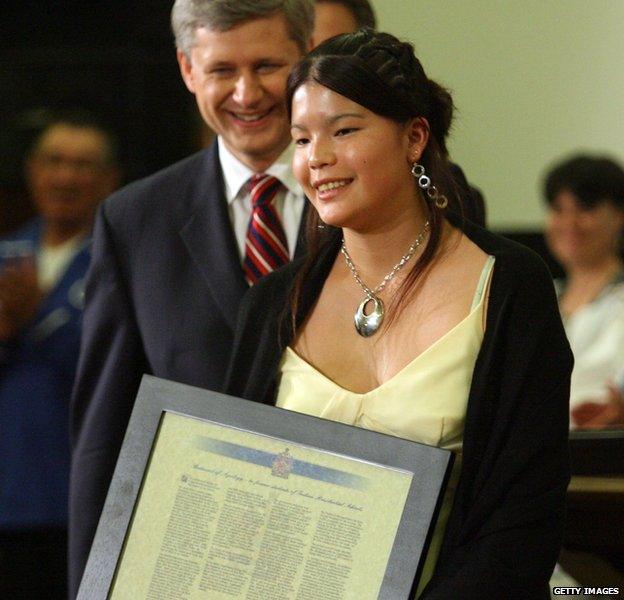
Crystal Merasty, the youngest recipient of compensation for the residential schools, receives a statement of apology from the Prime Minister in 2008
"People start to realise in their adult years, why did I scream at my kids like that? I did that because I learned that. I learned that in Residential School, because that's what we experienced."
Nolan's hope for the future is that they come to be at peace, as the last step of the grieving process.
"I'm just hoping people find peace, that they know who they are, to be proud of that, and [that] nobody else is going to tell them … they cannot speak their language again," she says. "I hope people reach that state and are able to hold their head up high."
Nolan says its not about non-indigenous people feeling guilty, but having a good understanding of what happened, to prevent something like this happening in Canada again.
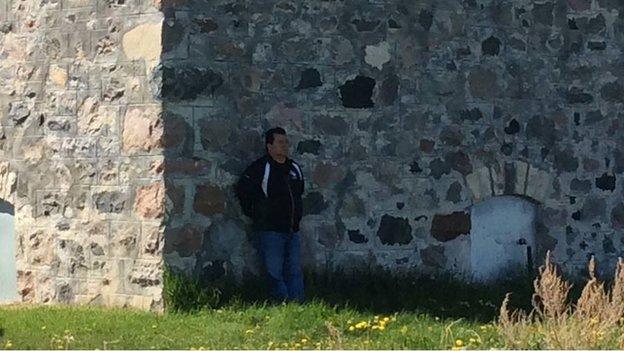
Joseph Maud returns to Pine Creek
Earlier this week, Joseph Maud visited the former Pine Creek Residential School with his daughter.
"I used to stand against the church wall, and I would feel a little comfort in the warmth of the sun, but inside, my little heart was always wanting my parents," he says.
As he sat there, 49 years later, Maud says, "the tears flowed".

More from BBC Magazine
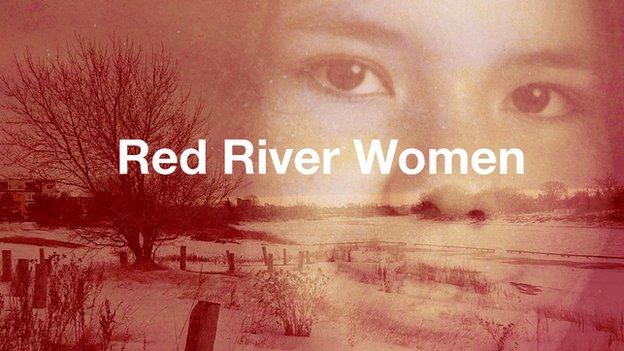
BBC reporter Joanna Jolly went on the trail of the murdered and missing to find out why so many of Winnipeg's Aboriginal women and girls have been killed. Read full article
- Published3 June 2015
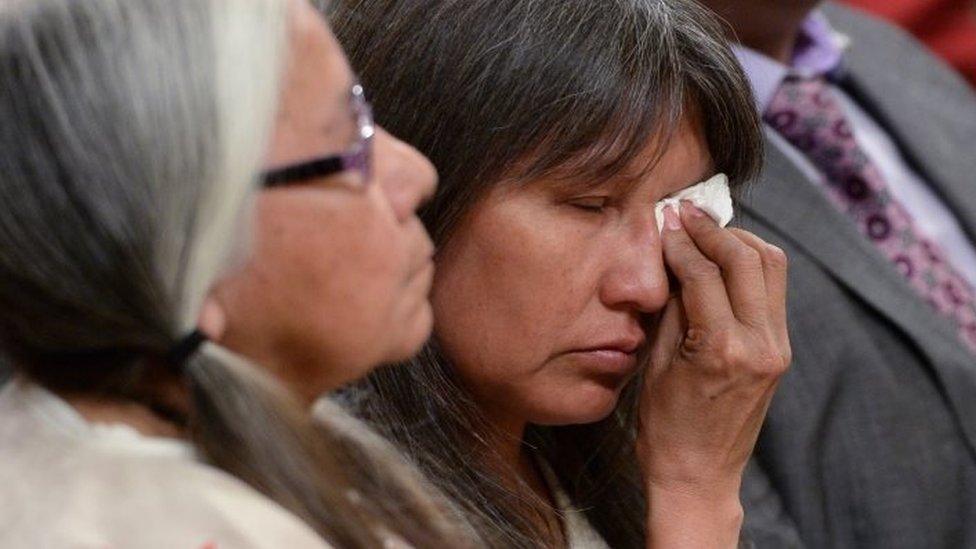
- Published9 April 2015
